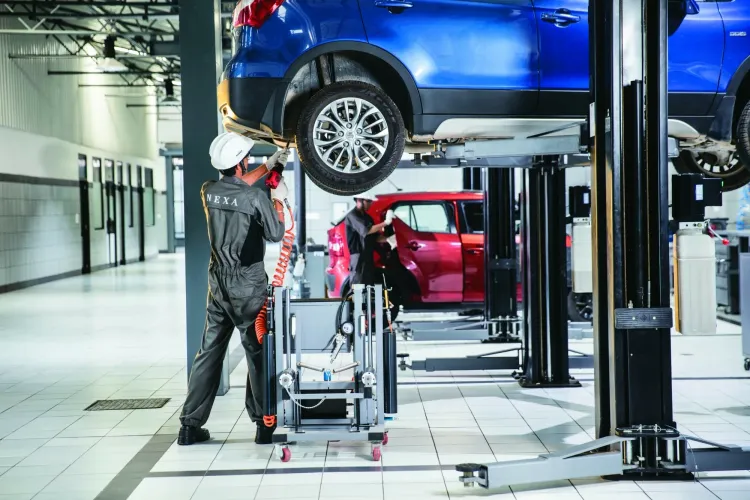India's automotive sector prepares for expansion, fueled by EV initiatives and job growth: Report

Synopsis
Key Takeaways
- FAME II scheme encourages EV adoption.
- 24.7% of cities forecast strong automotive growth.
- Mumbai, Hyderabad, and Pune show promising prospects.
- Chandigarh may struggle in automotive sector.
- Infrastructure improvements bolster job creation.
New Delhi, March 15 (NationPress) The automotive industry in India is poised for significant growth in the next year, propelled by favorable government initiatives and a burgeoning job market, as highlighted in a recent report.
The main driver of this growth is the Faster Adoption and Manufacturing of Hybrid and Electric Vehicles (FAME II) scheme, which has been operational since April 2019.
This initiative motivates states to provide both financial and non-financial incentives to enhance the uptake of electric vehicles (EVs), thereby aiding the sector's development.
As per the insights from data analytics firm GlobalData, approximately 24.7 percent of cities are anticipated to witness robust growth in the automotive field, while 49.5 percent are likely to experience moderate growth.
Key cities such as Mumbai, Hyderabad, and Pune are forecasted to excel. Conversely, around 7.5 percent of cities might encounter stagnant growth, while 9.7 percent and 15.5 percent could face moderate and pessimistic declines, respectively.
Chandigarh is identified as one of the locations expected to struggle in automotive growth. Hyderabad and Mumbai are particularly well-positioned for growth due to their expanding service sectors and increased job opportunities.
Hyderabad has seen a notable rise in employment, bolstered by government efforts to promote start-ups and entrepreneurship.
The state government's emphasis on information technology (IT) and IT-enabled services (ITES) has significantly contributed to job creation.
Moreover, ongoing enhancements in infrastructure, including roads, transportation, and power supply, have rendered the city more appealing to businesses and workers.
The analysis, conducted in 31 major cities, revealed that the growth in the workforce has subsequently fueled demand in the automotive sector.
"Although the overall growth of the automotive sector appears promising, regional dynamics significantly influence market trajectories," stated Madhuchhanda Palit, an Automotive Analyst at GlobalData.
She further noted that elements such as advancements in the service sector, the availability of job prospects, industrialization, and state government initiatives are critical in shaping the sector's growth across various regions.









